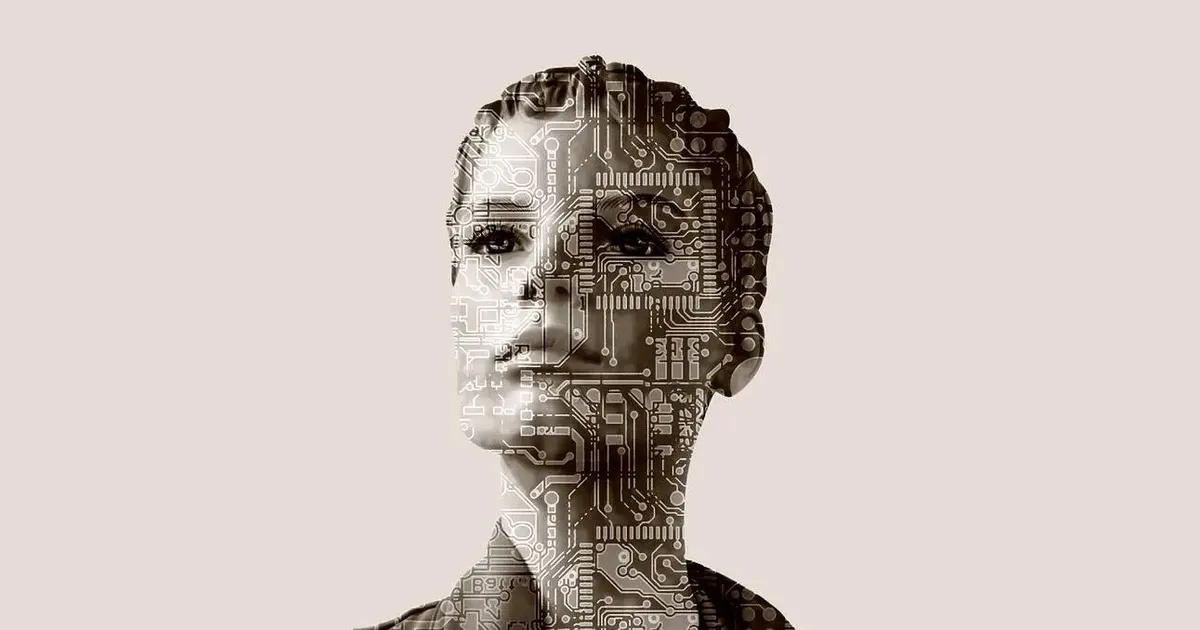Explore the dynamic world of artificial intelligence, where innovation meets controversy. Delve into AI's influence, from healthcare to economics, as we navigate its dual nature. Join the debate and shape the future of AI.
Introduction:
Unveiling AI's Multifaceted Role in Society
Unveiling AI's Multifaceted Role in Society
Artificial Intelligence (AI) has permeated every facet of modern life, revolutionizing industries, enhancing daily conveniences, and reshaping global economies. With its broad integration comes a complex array of impacts—both beneficial and detrimental. As AI continues to evolve at a breathtaking pace, society stands at a critical juncture, tasked with harnessing its potential while mitigating the inherent risks. This blog aims to dissect the nuanced roles AI plays in our world, exploring whether its contributions are a net positive or if the adverse effects overshadow its benefits.
Part I: AI as a Force for Good
1. Healthcare Revolution
AI's most profound impact is perhaps seen in the healthcare sector, where its applications promise to transform patient care and system efficiencies:
Diagnostic Improvements: AI algorithms, such as those developed for Google Health, are increasingly used for early detection of diseases, including cancer, more accurately and swiftly than human practitioners. For instance, AI has improved the accuracy of breast cancer diagnostics by analyzing mammography images with precision surpassing experienced radiologists.
Personalized Medicine: Leveraging vast data, AI helps tailor treatments to individual genetic profiles, enhancing the effectiveness of treatments for complex diseases like cancer and Alzheimer's. This approach not only improves outcomes but also minimizes side effects.
Surgical Precision: Robotic surgery, guided by AI, has been a game-changer in operating rooms, assisting in procedures that demand superhuman precision, thereby reducing patient recovery time and minimizing human error.
2. Educational Transformation
AI's integration into education is democratizing and personalizing learning at unprecedented levels:
Personalized Learning: Platforms like Knewton and Content Technologies use AI to adapt materials to fit the learning pace and style of individual students, proving particularly valuable in environments with diverse learning needs.
Accessibility: AI tools are breaking barriers for disabled students, providing technologies that convert text to speech or offering gesture recognition for those who cannot use a keyboard.
Efficiency in Administration: AI automates routine tasks such as grading and scheduling, freeing educators to invest more time in instructional and mentorship roles, thus enhancing educational quality.
3. Industrial and Economic Advancements
AI's applications in industry are streamlining operations and fostering economic growth:
Manufacturing: AI optimizes production lines in manufacturing, improving supply chain logistics and predictive maintenance, thereby reducing downtime and increasing efficiency.
Agriculture: Farmers use AI to analyze weather data, soil conditions, and crop health, making informed decisions that boost yield and reduce resource waste.
Financial Services: AI enhances customer experience and security in finance by powering chatbots that provide personalized advice, detecting fraudulent activities, and automating routine transactions.
4. Environmental and Conservation Efforts
AI is a potent tool in the battle against environmental degradation:
Climate Change: Through more accurate modeling and prediction, AI helps scientists and policymakers understand potential future scenarios and formulate effective responses.
Wildlife Conservation: AI-driven drones and tracking systems monitor endangered species and combat poaching by providing real-time data and predictive insights into poacher behavior.
Resource Management: Smart grids powered by AI optimize the distribution and use of energy in urban environments, reducing waste and increasing the share of renewables in the energy mix.
Part II: AI as a Potential Threat
1. Economic and Employment Challenges
Despite its potential, AI poses significant threats to traditional job markets and economic structures:
Job Displacement: Automation threatens to displace millions of jobs in sectors like transportation, retail, and beyond, potentially exacerbating unemployment and underemployment issues.
Wage Inequality: As AI technologies favor highly skilled workers, the wage gap between different skill levels may widen, further entrenching economic disparities.
Economic Shifts: The transition to an AI-driven economy requires shifts in policy and practice that many economies may find challenging to manage without significant social disruption.
2. Ethical and Social Concerns
AI's rapid proliferation raises ethical dilemmas and social implications that demand urgent attention:
Bias and Discrimination: AI systems can perpetuate and even amplify existing biases present in training data, leading to discriminatory outcomes, particularly affecting marginalized communities.
Surveillance and Privacy: The widespread adoption of AI-powered surveillance technologies raises concerns about privacy infringement and the erosion of civil liberties as governments and corporations collect and analyze vast amounts of personal data.
Dependency: Society's increasing reliance on AI technologies for decision-making and everyday tasks raises questions about human autonomy and agency, potentially leading to a loss of control over critical aspects of our lives.
3. Security and Safety Risks
As AI systems become more complex and interconnected, they introduce new vulnerabilities and safety concerns:
Vulnerabilities: AI systems are susceptible to exploitation and manipulation by malicious actors, leading to cybersecurity breaches, data theft, and privacy violations.
Autonomous Weapons: The development of lethal autonomous weapons systems (LAWS) raises profound ethical and moral questions about the delegation of life-and-death decisions to AI algorithms, potentially destabilizing global security.
Accidents and Malfunctions: AI systems are not immune to errors or malfunctions, and when deployed in critical domains such as healthcare or transportation, these failures can have catastrophic consequences for human safety and well-being.
4. Societal and Psychological Impacts
AI's influence on society extends beyond the economic and technological realms, shaping human behavior and societal dynamics:
Social Fabric: AI-driven algorithms in social media platforms and recommendation systems can exacerbate echo chambers, filter bubbles, and polarization, eroding social cohesion and fostering misinformation.
Mental Health: Excessive reliance on AI-powered technologies for social interaction and decision-making can lead to feelings of isolation, anxiety, and inadequacy, contributing to mental health issues.
Manipulation: The use of AI in targeted advertising, political campaigning, and behavioral manipulation poses risks to individual autonomy and democratic processes, raising questions about the integrity of public discourse and governance.
Part III: Navigating the Future
1. Policy and Regulation
Addressing the multifaceted challenges posed by AI requires robust governance frameworks and regulatory measures:
Global Standards: International cooperation is essential to establish norms and standards for the responsible development, deployment, and use of AI technologies.
Transparency and Accountability: AI developers and operators must prioritize transparency and accountability to ensure that AI systems are explainable, fair, and trustworthy.
Ethical Guidelines: Ethical considerations should be integrated into the design and deployment of AI technologies, guided by principles such as fairness, transparency, accountability, and privacy.
2. Education and Adaptation
Preparing society for the AI-driven future necessitates investment in education, training, and adaptation:
Reskilling Workforces: Governments, businesses, and educational institutions must collaborate to provide lifelong learning opportunities and retraining programs that equip workers with the skills needed in an AI-driven economy.
Public Awareness: Efforts to raise awareness about the opportunities and challenges posed by AI technologies are crucial to fostering informed public discourse and decision-making.
Research and Development: Continued investment in AI research and development is essential to advance the state-of-the-art, address existing limitations and biases, and unlock new applications with positive societal impacts.
3. Balancing Act
Achieving a balanced approach to AI entails navigating the complex interplay of technological innovation, ethical considerations, and societal values:
Harnessing AI for Good: Maximizing the potential benefits of AI while minimizing its risks requires intentional efforts to prioritize ethical considerations, promote inclusivity, and address societal needs.
Mitigating Risks: Proactive measures must be taken to mitigate the risks associated with AI, including bias mitigation, cybersecurity measures, and regulatory oversight.
Continuous Assessment: The development and deployment of AI technologies should be subject to ongoing evaluation and scrutiny to ensure that they align with societal values, serve the public interest, and contribute to human flourishing.
Conclusion: Forging a Path Forward
In conclusion, the debate over whether AI is doing more good than harm is multifaceted and complex, reflecting the dual nature of AI as a powerful tool with both transformative potential and inherent risks. While AI holds tremendous promise to revolutionize industries, enhance human capabilities, and address pressing global challenges, its unchecked proliferation poses significant threats to privacy, security, equality, and human autonomy.
The path forward requires a concerted effort to navigate the complexities of AI responsibly, ethically, and inclusively. By fostering collaboration among stakeholders, prioritizing ethical considerations, investing in education and adaptation, and adopting a balanced approach to governance and regulation, society can harness the transformative potential of AI while mitigating its risks and ensuring that AI serves the collective interests of humanity.
As we stand on the cusp of an AI-driven future, the choices we make today will shape the trajectory of tomorrow. It is incumbent upon us to approach the development and deployment of AI with foresight, empathy, and a steadfast commitment to advancing human flourishing in a rapidly changing world. Only by working together can we realize the full potential of AI as a force for good and navigate the complexities of the AI-driven future with wisdom, compassion, and integrity.
Closing Thoughts: Embracing the Complexity of AI
The discourse surrounding AI's impact on society underscores the intricate interplay between technological innovation, societal values, and human flourishing. While the narrative often gravitates towards polarized perspectives—either heralding AI as a panacea for all societal ills or decrying it as an existential threat—it is essential to recognize the nuanced reality that lies between these extremes.
AI, like any transformative technology, is a tool—a reflection of the intentions and actions of its creators and users. Its potential for good is vast, offering solutions to some of humanity's most pressing challenges, from disease diagnosis to environmental conservation. Yet, its rapid advancement also presents profound ethical, social, and economic implications that demand careful consideration and proactive mitigation.
As we navigate the complexities of the AI-driven future, it is crucial to embrace a holistic and inclusive approach—one that acknowledges the diverse perspectives, concerns, and aspirations of all stakeholders. This requires fostering open dialogue, promoting interdisciplinary collaboration, and prioritizing the values of fairness, transparency, accountability, and equity in AI development and deployment.
Moreover, it necessitates a commitment to continuous learning, adaptation, and reflection—a recognition that our understanding of AI's impact will evolve over time, requiring us to remain vigilant, adaptable, and responsive to emerging challenges and opportunities.
Ultimately, the question of whether AI is doing more good than harm is not a static dichotomy but a dynamic spectrum, shaped by our collective actions and choices. By approaching the development and deployment of AI with humility, empathy, and a shared commitment to the common good, we can harness its transformative potential to build a more equitable, inclusive, and sustainable future for all.
As we embark on this journey, let us remain steadfast in our pursuit of a future where AI serves as a catalyst for positive change—a future guided by wisdom, compassion, and a steadfast commitment to advancing the well-being of humanity and the planet we call home.


























